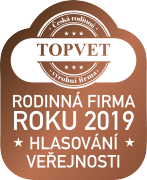Guarana – Paullinia Cupana L.
Guarana – Drinking Paulinia (Paullinia Cupana L.)
Family: Sapindaceae
Vernacular and other names
Drinking kurura, Paullinia crysan, Paullinia sorbilis.
History
The herb from the Amazon has been traditionally used for centuries by the Indians there for its stimulating effects. Amazonian Indians in the Orinoco and Rio Negro basins also used it to relieve pain and called it the secret eye. The name guarana is derived from the word warana. The Indians even cultivated guarana on plantations in pre-Columbian times (some scientists today even think that today's wild plants are remnants of originally domesticated cultivation). It was discovered for Europe in 1669 by the Jesuit missionary Joao Felipe Bettendorf in the area of the Maués River. The first chemical analysis was carried out in 1700 by the German botanist Theodor von Martius. He isolated a bitter white crystalline substance and called it guaranine (later renamed caffeine). More detailed analyzes were made in 1940 in France and Germany based on information that guarana is used by the Indians against fevers, headaches, spasms and as an energy tonic. Guarana is a very effective stimulant.
Occurrence
Native to the Amazon lowland and especially south of it. It is currently grown mainly in Brazil, Venezuela and Uruguay. Mostly wild plants are harvested. 80% of the world's commercially used production is obtained in the middle of the Amazon rainforest in northern Brazil. Through the FUNAI Foundation, the collection of guarana is the main source of income for the indigenous tribes.
Description
A climbing woody vine with a grooved stem and large pinnate leaves of 3-5 oval leaflets. Small greenish white or yellow flowers form the clusters. The bright red fruits are capsules containing one large black seed, enclosed in a red fleshy skin. As the fruit ripens, the surface cracks to reveal a large, black seed (which makes it look like an eye). The fruits ripen in October and November and are about the size of grapes. The seeds that have not yet fallen to the ground are harvested. It grows to a height of 12 meters.
Used parts
Seeds (so-called guarana nuts). They are collected when ripe, dried and evenly roasted. They taste very bitter and astringent. After grinding, they are used in capsules and tinctures.
Active substances
The seeds contain 4-8% caffeine. They contain mutton, tannin, starch, theophylline, theobromine, vegetable oil and vitamins of group B and vitamin C. Other substances include catechin tannins (10-25%), resin and red dye. It also contains a small amount of oil that has not yet been sufficiently studied.
Classification
Stimulant, Antioxidant, Astringent, Tonic.
Proven effects
It is mainly used for its stimulating and tonic effects without increasing nervousness and tension. Guarana is used similarly to coffee to reduce fatigue, maintain focus and alertness. It increases mental performance and improves long-term and short-term memory. Like other preparations containing caffeine, it is used to relieve pain and migraines. Due to the content of starch and tannins, it suppresses mild forms of diarrhea (it also has an antibacterial effect - especially on E. coli and Salmonella). In addition to its stimulating effect, it is also able to reduce the feeling of hunger and stimulate the breakdown of fats (accelerates metabolism, increases body temperature). It is therefore very suitable as a supplement in reduction diets. It is recommended for use in the treatment of chronic fatigue syndrome and asthenia (fatigue without an obvious cause). Eliminates free radicals in the body. Some sources report guarana's ability to regulate blood flow and normalize blood pressure. Guarana is quite effective against hangovers. It superficially expands the vascular and lymphatic system, which is why it is used in cellulite-reducing preparations. It is also added to shampoos for oily hair. According to botanist James Duke, it acts preventively against arteriosclerosis. On the basis of guarana, a patent was granted in 1989 for a preparation that reduces blood clotting (anti-aggregation abilities).
Usage
• stimulates fatigue
• to reduce pain
• suppresses diarrhea
• during reduction diets
• athletes use it to increase performance
• increases the effectiveness of anti-clotting agents (Warfarin)
Conditions for achieving maximum effect
• The preparation should be administered in the morning.
• Apply in bursts when feeling tired or when you need to activate.
• The effectiveness of the herb decreases with long-term use.
• Follow the recommended daily dose.
• Attention, caffeine is on the list of doping substances.
It is necessary to beware of the unethical behavior of some producers who add synthetic caffeine to guarana extract! Currently, it is possible to buy extracts standardized for caffeine content (even better for theobromine and theophylline). Therefore, it is not necessary to deceive the customer.
- Andrew Chevallier, Herbal Remedies, 2007
- Sélection du Readerś Digest, 2003.
- Dr. Duke's Phytochemical and Ethnobotanical Databases
- Leslie Tayllor, The Healing Power of Rainforest Herbs, 2005
- Roberts, A. T., et al. “The effect of an herbal supplement containing black tea and caffeine on metabolic parameters in humans.” Altern. Med. Rev. 2005 Dec; 10(4): 321-5.
- Berube-Parent, S., et al. “Effects of encapsulated green tea and guarana extracts containing a mixture of epigallocatechin-3-gallate and caffeine on 24 h energy expenditure and fat oxidation in men.” Br. J. Nutr. 2005 Sep; 94(3): 432-6.
- Weckerle, C. S., et al. “Purine alkaloids in Paullinia.” Phytochemistry. 2003 Oct; 64(3): 735-42.
- Espinola, E. B., et al. “Pharmacological activity of guaraná (Paullinia cupana Mart.) in laboratory animals.” J. Ethnopharmacol. 1997; 55(3): 223–29.
- Adis, J.; Fonseca, O.J.M. & Strassen, R. Zur. Um trips como causador de superbrotamento em guaraná. In: Simpósio Brasileiro do Guaraná, 1., Manaus, 1983.
- Anais. Manaus, Embrapa-Uepae de Manaus, 1984. p. 412.
- Santa Maria, A., Lopez, A., Diaz, M. M., Munoz-Mingarro, D., and Pozuelo, J.M. (1998) Evaluation of the toxicity of guaraná with in vitro bioassays. Ecotoxicol Environ Saf. Mar. 39(3): 164-7.
- Mendes, F. R., et al. "Brazilian plants as possible adaptogens: An ethnopharmacological survey of books edited in Brazil." J. Ethnopharmacol. 2007 Feb; 109(3): 493-500.
- Fukumasu, H., et al. “Protective effects of Guarana (Paullinia cupana Mart. var. Sorbilis) against DEN-induced DNA damage on mouse liver.” Food Chem. Toxicol. 2006 Jun; 44(6): 862-7.
- Basile, A., et al. “Antibacterial and antioxidant activities of ethanol extract from Paullinia cupana Mart.” J. Ethnopharmacol. 2005 Oct; 102(1): 32-6.
- Duarte, M. de L. R. & Albuquerque, F. C. de; Correa, M. P. F. & Batista, M. de F. Doenças da cultura do guaraná no trópico ùmido. Belém, Embrapa-Cpatu, 1983. 2p. (EMBRAPA-CPATU. Pesquisa em Andamento, 98).
- Albuquerque, F. C. Antracnose do guaraná. Rio de Janeiro, SIA, 1961. 22p. (Estudos técnicos, 18). E em B. téc. Inst. Agron. N., Belém, (40):1-33, 1960.
- Albuquerque, F. C. de; Duarte, M. de L. R. & Kato, A. K. Duas Phytophthora patogênicas ao guaraná. In: SIMPÓSIO DO TRÓPICO ÚMIDO, 1., Belém, 1984. Resumos. Belém, Embrapa-Cpatu, 1984. p. 279-80.
- Batista, A. C. & Bezerra, J. L. Novos fungos do guaraná (Paullinia cupana H.B. & K.) no Amazonas. Recife, Instituto de Micologia. Universidade de Recife & Instituto Nacional de Pesquisas da Amazônia, 1961. 19p. ilust. (Publicação, n. 318).
- Areia, C. A. Alguns aspectos da parede celular em estrutura fina; Paullinia cupana H. B. K. var. sorbilis (Mart.) Ducke (sapindaceae). Rodriguésia, Rio de Janeiro, 26(33):103-12, 1971.
- Basile, A., et al. “Antibacterial and antioxidant activities of ethanol extract from Paullinia cupana Mart.” J. Ethnopharmacol. 2005 Oct; 102(1): 32-6.
- Areia, C. A. Anatomia da folha do guaraná Paullinia cupana var. sorbilis (Mart.) (Sapindaceae). Rodriguésia, Rio de Janeiro. 25(37):297-334, 1966. (28 ref)
- Cohen, I. A. Preferência na coleta de pólen das abelhas Melipona seminigra Merrillae Cock. instalados em um plantio de guaraná (Paullinia cupana var. sorbilis). Manaus, FUA, 1985. 67p.
- Ducke, A. Diversidade do guaraná. Rodriguêsia, Rio de Janeiro, 3(10):155-6,1937.
- Ducke, A. Plantas de cultura precolombiana na Amazônia brasileira; notas sobre as espécies ou forma espontâneas que supostamente Ihes teriam dado origem. Belém, 1946, 12p. (IAN. B. técnico, 8).
- Bydlowski, S. P., et al. “An aqueous extract of guaraná (Paullinia cupana) decreases platelet thromboxane synthesis.” Braz. J. Med. Biol. Res. 1991; 24(4): 421–24.
- Bydlowski, S. P., et al. “A novel property of an aqueous guaraná extract (Paullinia cupana): inhibition of platelet aggregation in vitro and in vivo." Braz. J. Med. Biol Res. 1988; 21(3): 535–38.
- Haskell, C. F., et al. "A double-blind, placebo-controlled, multi-dose evaluation of the acute behavioural effects of guarana in humans." J. Psychopharmacol. 2007; 21(1): 65-70.
- Kennedy, D. O., et al. “Improved cognitive performance in human volunteers following administration of guarana (Paullinia cupana) extract: comparison and interaction with Panax ginseng.” Pharmacol. Biochem. Behav. 2004 Nov; 79(3): 401-11.
- and more
Author: Dr. Jiří Pantůček and the Topvet collective
© Copyright (2009) MVDr. Jiří Pantůček - all rights reserved. No part of this document may be reproduced or transmitted in any form or by any means, electronic, including copying, recording, or by any information retrieval system, including websites, without written permission.
All information contained in the herbarium has not been evaluated by the control authorities for the control of dietary supplements. All information contained in this plant herbarium is for educational, informative and entertainment purposes. This information should not be used for diagnosis, indication or change of treatment prescribed by a doctor. The plants listed in the herbarium are not substitutes for medicines. In the case of any treatment, it is necessary to consult the use of dietary supplements with your attending physician.














